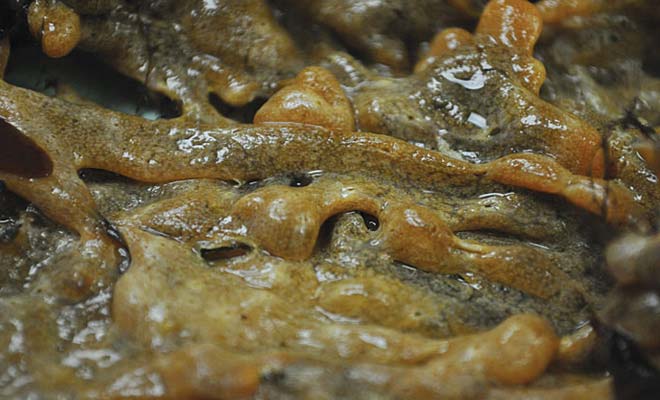Warning against the potential spread of Invasive Species in Alaska
Some years after seeing an ADF&G sign warning against the potential spread of Atlantic salmon within a Kodiak drainage, which was the first serious thought I spared towards invasive species in Alaska, I’ve successfully purged my collection of felt-soled wading bootsand am prepared for our state’s new regulations mandating the use of only non-absorbent soles.


A member of the public, having witnessed the devastation caused to California trout fisheries from whirling disease, proposed the regulation change, which was adopted statewide in 2010 and went into effect in January of 2012. (Additionally, as the Alaska Board of Game has also deemed invasive species a significant potential threat to Alaska’s aquatic ecosystems, felt-soled waders and wading boots are no longer legal footwear when hunting in Alaska’s freshwater, effective January 1, 2013.)
Non-native species, whether aquatic or otherwise, are considered invasive when they negatively impact the ecosystem, the economy or human health. According to Tammy Davis, ADF&G Invasive Species Program Lead, “Invasive species can change ecosystems by altering habitat composition, increasing wildfire risk, competing with native species for food and territory, changing existing predator/prey relationships, reducing productivity or otherwise disrupting natural habitat functions. In doing so,” Davis continued, “invasive species pose one of the greatest threats to biological diversity.”
For anglers, felt-soled wading boots are by no means the only way in which invasive species can be introduced to our waters, again according to ADF&G’s Davis. “Common pathways for intentional or accidental translocation of aquatic invasive plants and animals are illegally dumping unwanted live bait, or aquaria pets and plants; illegally transporting live animals and plants from one water body to another, boats, trailers, or floatplanes that aren’t cleaned between water bodies and use of any gear in a pristine system after exposure to infested water.”

Even the newest wadingboots with the special synthetic soles can be a culprit if not cleaned properly or thoroughly dried between waters. Decontamination of gear used in contaminated waters is the key to reducing the angler’s role in moving invasive species into new areas.
Currently, there are several species of concern in the state, with ADF&G and other agencies constantly monitoring those already discovered—Canadian waterweed, Nuttall’s waterweed and the colonial tunicate Didemnum vexillum (also known as marine vomit) among them—as well as conducting field research to determine if more invasive species have made their way into the state. As anglers and frequent visitors to the state’s waters, there are several things you can do to help:
- Rinse and remove any plant debris, mud and sediment from gear, boats and boat trailers, floatplane floats and rudders. Separate all pieces of wading footgear and waders to remove visible plant debris, mud and sediment before leaving the area.
- Empty all water from coolers, bilge pumps and buckets, and wring out gear before leaving the boat launch or fishing area.
- Completely dry gear between systems or trips.
- Report any plant or animal you suspect to be invasive. Take a photo of the individual and one of the population, and then call the Invasive Species hotline at 1-877-INVASIV.
With early detection, no matter the species, preventing and controlling the spread of an invasive will be cheaper and easier than trying to restore species and habitats down the road. Across the state, aggressive response to invasive species will help limit the damages they could impose on Alaska’s wildlife, habitats and people, which is everyone’s goal.
